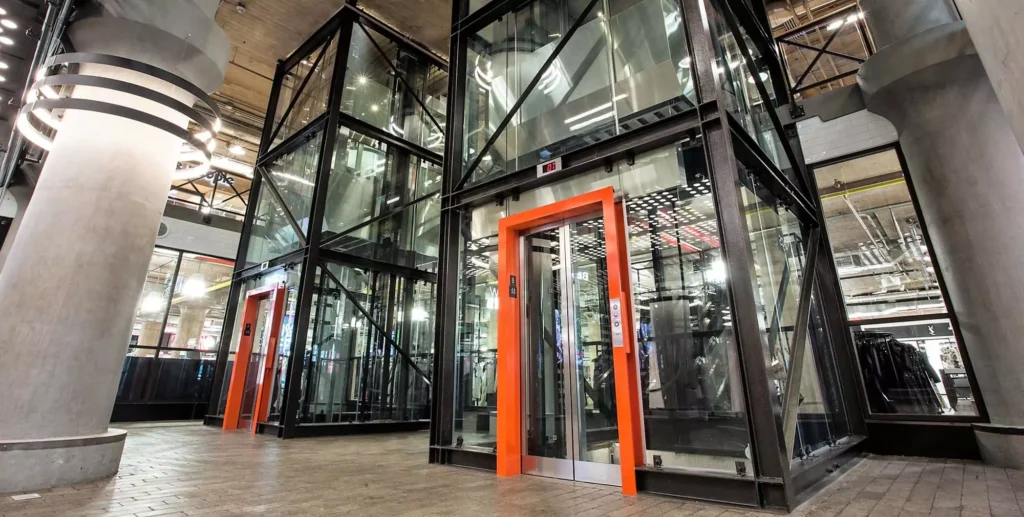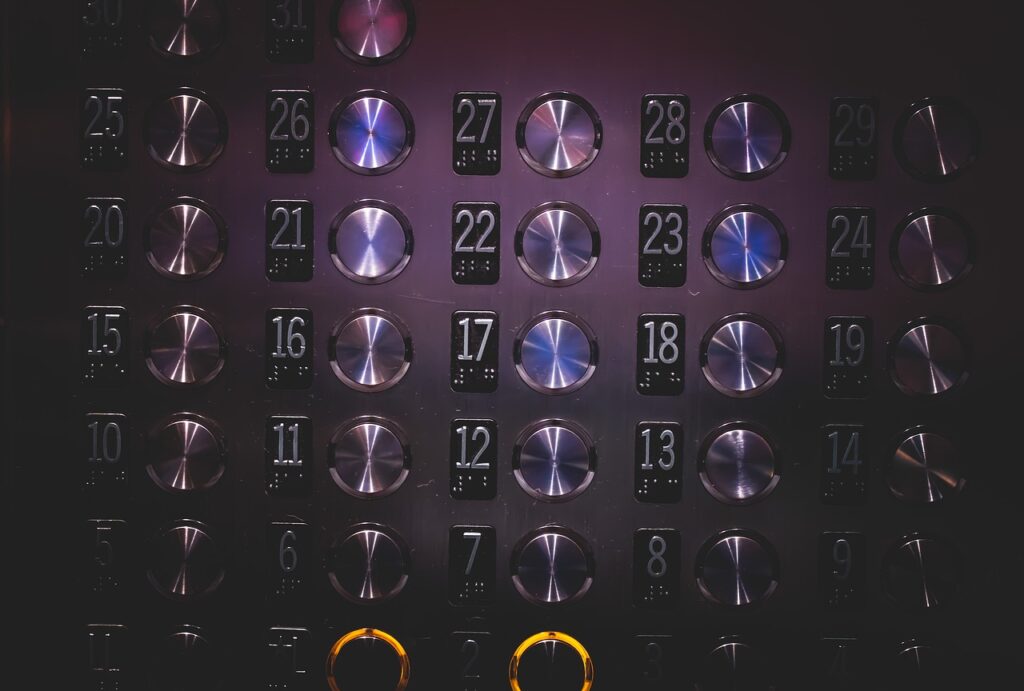Traction elevators are one of the most common types of elevators and are used in high-rise buildings and commercial complexes. Traction elevators are based on the principle of movement using pulleys and cables to raise and lower the cab, they are distinguished by their ability to withstand heavy loads and reach considerable heights. In this article, we will review the components of traction elevators, their types, how to maintain them, as well as provide answers to common questions related to them.
Types of traction elevators
1. Conventional traction elevators
Basic components
- Electric motor: It is the primary motor that lifts the cab via cables.
- Pulleys: Guide the cables and move the cab up and down.
- Steel cables: The cab holds and manages its movement by the motor.
- Counterweight : It balances the weight of the cab to increase efficiency and relieve stress on the motor.
Characteristics of conventional traction elevators
- Energy-efficient.
- The ability to withstand heavy loads.
- Suitable for towers and high buildings.
2. Traction elevators without a machine room
Basic components
- Permanent magnetic motor: It uses sophisticated engines that do not need a separate room.
- Intelligent control system: Controls the movement of the elevator precisely.
- Compact design: Provides additional building space.
Advantages of elevators without a machine room
- You need less space in the building.
- More energy-efficient.
- Easy installation and maintenance.
Components of traction elevators
1. Electric motor
The motor is the main element of traction elevators, it is responsible for the operation of the cables that move the cab.
2. The cables
Strong steel cables withstand the considerable weight of the cabin and passengers and provide safe and stable movement.
3. Pulleys
It correctly guides the cables to ensure a smooth lifting and lowering of the cab.
4. Counterweight
It reduces energy consumption and helps to provide balancing movement when lifting the cab.
The importance of maintenance for traction elevators
1. Increased shelf life
Regular maintenance helps reduce breakdowns and increase the life of the elevator.
2. Performance improvement
Maintenance maintains the efficiency and speed of elevator operation.
3. Security assurance
Maintenance of key parts such as cables and brakes ensures the safety of passengers and minimizes risks.
Frequently asked questions
1. What is the difference between traction lifts and hydraulic lifts
Traction elevators use cables and pulleys to lift the cab, while hydraulic elevators rely on fluid pressure to lift the cab. Traction elevators are more efficient and are suitable for high buildings, while hydraulic elevators are suitable for low-rise buildings.
2. How often should traction elevators be checked
It is advisable to inspect traction elevators every 3 to 6 months to ensure safety and operational efficiency.
3. Can traction elevators be installed in old buildings
Yes, traction elevators can be installed in old buildings, but this may require modifications to the building infrastructure to suit the needs of the elevator.
4. Are traction elevators energy efficient
Yes, traction elevators are more energy efficient compared to some other systems, especially with the presence of counterweights that help reduce the effort required from the engine.
Conclusion
Traction elevators are an excellent option for high-rise buildings due to their efficiency and ability to withstand heavy loads. Choosing the right type of traction elevators and regular maintenance has a big role in maintaining their perfect performance and ensuring the safety of passengers. Whether it is a conventional elevator or without a machine room, this technology will still be an ideal solution for modern and futuristic buildings.



